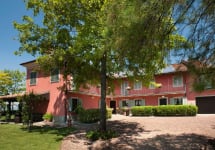Pio Cesare Barolo 2019
-
Robert
Parker -
James
Suckling -
Jeb
Dunnuck -
Wine
Spectator



Product Details
Your Rating
Somm Note
Winemaker Notes
A classic style Barolo. Excellent structure, harmony and elegance. Soft tannins and balanced fruit. Approachable, but with a very long ageing potential.
Professional Ratings
-
Robert Parker's Wine Advocate
Pio Cesare does a great job with its classic 2019 Barolo (in production since 1881). The bottom of the front label reads "Barolo Pio" in memory of the legendary Pio Boffa. He was a wine entrepreneur who gained the immediate respect and love of all those who knew him. He passed away tragically during the COVID-19 pandemic just as the vaccines were being rolled out. This is a large production of about 70,000 bottles with fruit sourced from across seven vineyards in five villages. Despite those ambitious numbers, the wine remains strictly focused on bright Nebbiolo fruit with red cassis and aniseed. The finish is smooth with tannins that elegantly dissolve over the palate.
-
James Suckling
Lovely perfumes of flowers, fresh strawberries and raspberries follow through to a medium- to full-bodied palate with fine tannins that run the length of the wine. Citrus and spice undertones. Finishes long and intense. Tannic finish.
-
Jeb Dunnuck
A touch more reserved at the moment, the 2019 Barolo reveals notes of pure red fruit, cherry, grenadine, dusty earth, and menthol. It is gripping with structure and rich with tea leaf, cherry, and turned soil. Drink 2024-2035.
-
Wine Spectator
A savory version, displaying macerated cherry and currant fruit aligned with eucalyptus, rosemary and earth flavors. Dense and lively, ending with a solid grip of tannins. Fresh and on the austere side. Best from 2026 through 2042. 5,800 cases made, 3,500 cases imported.
Other Vintages
2020-
James
Suckling -
Robert
Parker -
Wine
Spectator
-
James
Suckling -
Robert
Parker - Decanter
-
Wine
Enthusiast -
Wine
Spectator
-
James
Suckling -
Robert
Parker -
Tasting
Panel -
Wine &
Spirits -
Wine
Enthusiast
-
Wine
Enthusiast -
Robert
Parker -
James
Suckling -
Jeb
Dunnuck -
Wilfred
Wong - Decanter
-
James
Suckling - Decanter
-
Wine
Enthusiast -
Wine &
Spirits -
Robert
Parker -
Jeb
Dunnuck -
Wine
Spectator
-
James
Suckling -
Robert
Parker -
Wine
Spectator -
Wine
Enthusiast -
Wine &
Spirits
-
Robert
Parker -
Wine
Enthusiast -
James
Suckling -
Wine
Spectator - Decanter
-
James
Suckling -
Robert
Parker -
Wine
Spectator -
Wine
Enthusiast -
Wine &
Spirits
-
James
Suckling -
Robert
Parker
-
Robert
Parker -
James
Suckling -
Wine
Enthusiast -
Wine &
Spirits -
Wine
Spectator
-
Robert
Parker -
James
Suckling
-
Wine
Enthusiast -
Robert
Parker -
Wine
Spectator
-
Wine
Enthusiast -
Robert
Parker -
James
Suckling -
Wine
Spectator
-
Robert
Parker -
Wine
Enthusiast -
Wine
Spectator -
James
Suckling
-
Wine
Spectator -
Robert
Parker -
Wine
Enthusiast
-
James
Suckling -
Wine
Spectator -
Wine
Enthusiast
-
Wine
Spectator -
Robert
Parker
-
Wine
Spectator -
Robert
Parker
-
Wine
Spectator
-
Wine
Spectator -
Robert
Parker

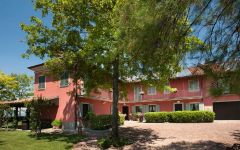
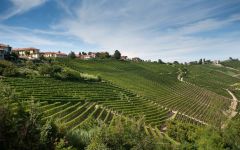
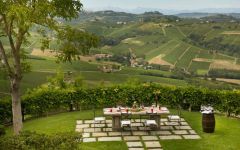
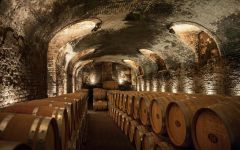


Pio Cesare has been producing wine for more than 100 years and through generations. The tradition began in 1881, when Pio Cesare started gathering grapes in his vineyards and purchasing those of some selected and reliable farmers in the hills of Barolo and Barbaresco districts.
At Pio Cesare, there has always been a conviction that great wine can come only from the finest grapes and the winery's output has always been limited through adherence to the highest standards. Pio Cesare limits its production by using only the most mature and healthy grapes. The ripening of the grapes is carefully monitored and the harvest is rigidly controlled with each grape selected by hand.
Today, the estate is managed by Pio Boffa, great-grandson of Pio Cesare. Under his stewardship, the wines of Pio Cesare have become famous throughout the world. Great strides have been made in quality, and single vineyard offerings have dazzled the wine press.

Responsible for some of the most elegant and age-worthy wines in the world, Nebbiolo, named for the ubiquitous autumnal fog (called nebbia in Italian), is the star variety of northern Italy’s Piedmont region. Grown throughout the area, as well as in the neighboring Valle d’Aosta and Valtellina, it reaches its highest potential in the Piedmontese villages of Barolo, Barbaresco and Roero. Outside of Italy, growers are still very much in the experimentation stage but some success has been achieved in parts of California. Somm Secret—If you’re new to Nebbiolo, start with a charming, wallet-friendly, early-drinking Langhe Nebbiolo or Nebbiolo d'Alba.

The center of the production of the world’s most exclusive and age-worthy red wines made from Nebbiolo, the Barolo wine region includes five core townships: La Morra, Monforte d’Alba, Serralunga d’Alba, Castiglione Falletto and the Barolo village itself, as well as a few outlying villages. The landscape of Barolo, characterized by prominent and castle-topped hills, is full of history and romance centered on the Nebbiolo grape. Its wines, with the signature “tar and roses” aromas, have a deceptively light garnet color but full presence on the palate and plenty of tannins and acidity. In a well-made Barolo wine, one can expect to find complexity and good evolution with notes of, for example, strawberry, cherry, plum, leather, truffle, anise, fresh and dried herbs, tobacco and violets.
There are two predominant soil types here, which distinguish Barolo from the lesser surrounding areas. Compact and fertile Tortonian sandy marls define the vineyards farthest west and at higher elevations. Typically the Barolo wines coming from this side, from La Morra and Barolo, can be approachable relatively early on in their evolution and represent the “feminine” side of Barolo, often closer in style to Barbaresco with elegant perfume and fresh fruit.
On the eastern side of the Barolo wine region, Helvetian soils of compressed sandstone and chalks are less fertile, producing wines with intense body, power and structured tannins. This more “masculine” style comes from Monforte d’Alba and Serralunga d’Alba. The township of Castiglione Falletto covers a spine with both soil types.
The best Barolo wines need 10-15 years before they are ready to drink, and can further age for several decades.
